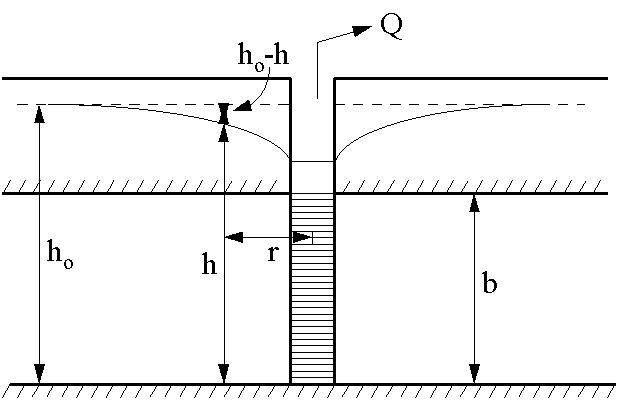
Theis Equation Calculation for Aquifer Testing and Well DrawdownLast Revision: May 18, 2010An aquifer test (or a pumping test) is conducted to evaluate an aquifer by "stimulating" the aquifer through constant pumping, and observing the aquifer's "response" (drawdown) in observation wells. Aquifer testing is a common tool that hydrogeologists use to characterize a system of aquifers, aquitards and flow system boundaries. Aquifer tests are typically interpreted by using an analytical model of aquifer flow (the most fundamental being the Theis solution) to match the data observed in the real world, then assuming that the parameters from the idealized model apply to the real-world aquifer. In more complex cases, a numerical model may be used to analyze the results of an aquifer test, but adding complexity does not ensure better results A valuable discussion of hydrogeology as it applies to this tool is available. Much of the information is from the North Carolina Division of Water Resources. Their time and effort in writing this text, along with numerous other educational topics about water, is greatly appreciated. An article written by Matt Lindon, Water Mining for a Pot of Gold, is also online. Water and energy sustainability are issues of importance in Utah, discussion of this topic is also available here on the Water Rights website.  An offline version of this calculator in Excel spreadsheet form with included graph set up is available. Values for aquifer transmissivity and storativity in various parts of the state can be found in Water Rights Technical Publications. |